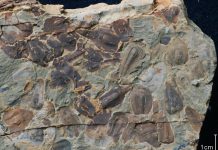
50,000 years ago, North America was home to huge animals known as megafauna.
These included mammoths, mastodons, saber-toothed tigers, giant wolves, bison, camels, giant beavers, and ground sloths.
But, around the end of the Last Ice Age, most of these large creatures vanished. The reason why is still a big puzzle for scientists.
Some experts believe humans played a crucial role. They think that humans either hunted these animals or changed their habitats in ways that the megafauna couldn’t adapt to.
Others argue that climate change was the main culprit, as the Earth warmed up after thousands of years of icy conditions, causing environments to change too quickly for these animals to keep up.
This debate has been ongoing and heated, but no definitive answer has been found. A significant challenge is the condition of the bones that scientists study.
Many bones are fragmented and hard to identify due to exposure, wear, and decay over thousands of years.
However, recent advancements in technology might help solve this mystery. A new study published in Frontiers in Mammal Science used a technique called ZooMS (Zooarchaeology by Mass Spectrometry).
ZooMS can analyze tiny fragments of bone collagen, a protein that survives long after an animal dies. This method can identify bones at a molecular level, even when traditional methods fail.
Researchers focused on the Smithsonian National Museum of Natural History’s collection, which contains bones from various archaeological digs over the past century.
Despite their age and fragmented state, many of these bones still contained enough collagen for analysis.
The study found that 80% of the sampled bones provided good results, with 73% identifiable to the genus level.
This included bones from bison, mammoths, camels, and possibly mastodons. These findings are significant because they show that even old, fragmented bones can provide valuable information.
This research highlights the importance of preserving archaeological collections, even those that seem unremarkable.
Many museums are underfunded, leading to the neglect or disposal of these important specimens. However, as this study demonstrates, these old bones can still yield crucial information.
Using ZooMS, scientists can now gather new data from bones that were previously too damaged to study.
This could help answer long-standing questions about when, where, and why North America’s megafauna disappeared.
It’s a reminder that even the smallest, most overlooked pieces can hold the key to solving big mysteries.
Source: Frontiers.



